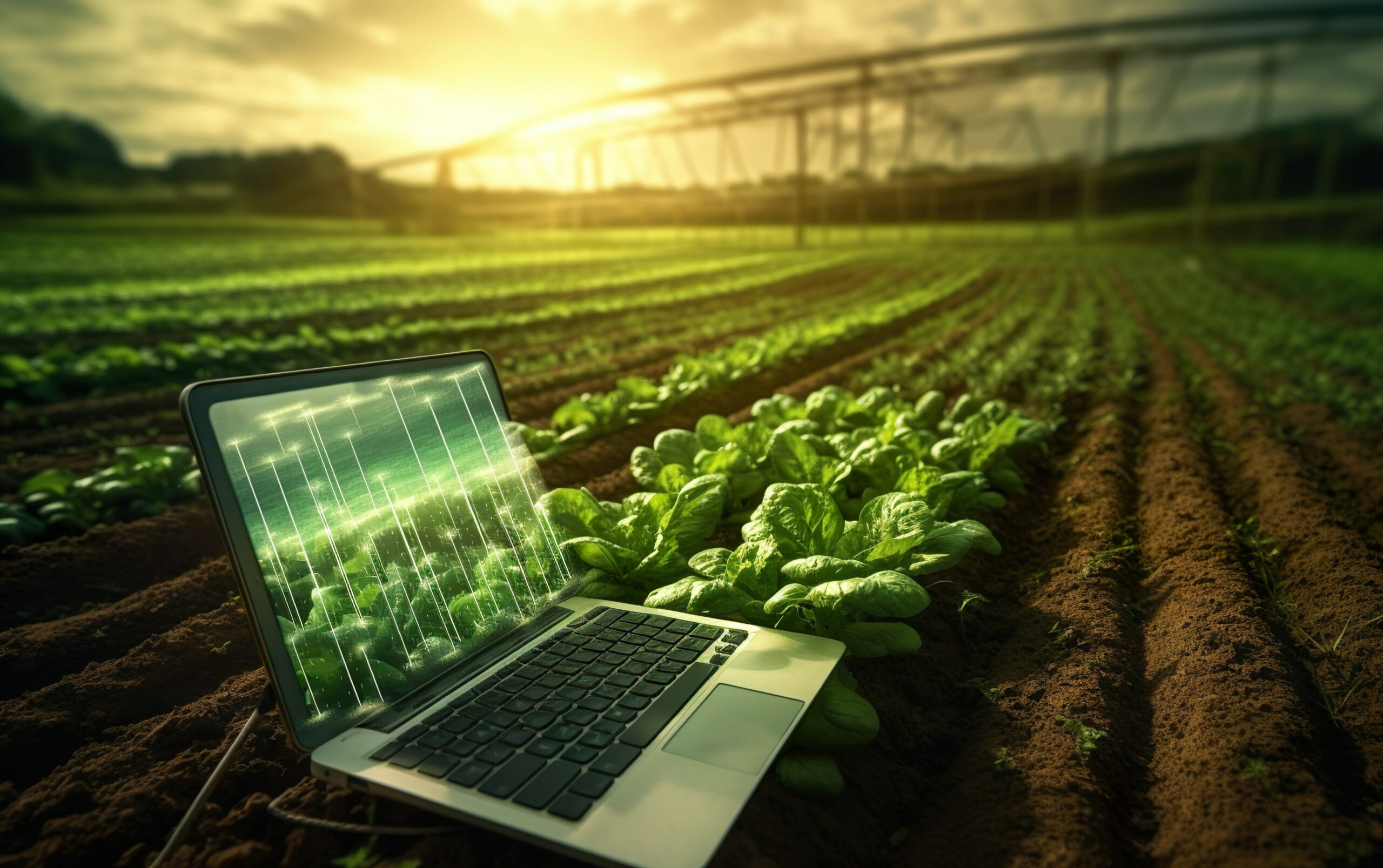
A Day Amid Data and Coding: My Life as an Ag-Tech Data Scientist
Hi everyone! I’m Siyabusa, a data scientist at the exciting intersection of agriculture and technology. Let me take you on a whirlwind tour of a typical working day in my life, where data becomes the fuel for innovative farming.
My day starts with diving into a field of data, much like farmers tend their crops. Today, I’m analyzing gridded global soil and weather data sets from satellite imagery and remote sensing for large areas of farming lands. My goal? To understand the intricate dance between soil characteristics and weather using geospatial tools. Adding machine learning algorithms into the mix, I build models that predict with pinpoint accuracy where crops and crop types are suitable for cultivation and what is really missing in the soil and weather for farmers to improve yields. This information will be passed on to the farm manager, allowing them to adjust management practices.
Next, I step into the role of a virtual agronomist, where historical yield data from hundreds of farms and experimental sites across Africa sits before me, waiting to be analyzed and interpreted. I use clustering algorithms to identify groups of farms with similar characteristics, and use modeling and decision support tools to determine what each farmer individually, as a group and as a region needs to do to improve productivity. Imagine this: a mobile app that whispers optimal plant population, planting times, variety, fertilizer dosages, and general crop management information in a farmer’s local language, based on their specific field conditions. That’s the magic of data-driven precision agriculture.
Despite the best laid farm management practices, climate risk throws wrenches into the best-laid plans. But fear not! As a data scientist, I’m armed with large volumes and volumes of historical, current and future climate data. My job is to distill and translate these complex climate datasets into actionable insights for farmers and decision makers. Think of it as preparing them for the agricultural equivalent of a storm; by anticipating delayed rain, early cessation of rainfall, heatwaves, droughts, or floods, we can help them adjust planting schedules, choose climate-resilient crop varieties, and build stronger defenses against nature’s fury.
My day doesn’t end with analyzing data alone. I believe in the power of collaboration, so I spend time building bridges between the worlds of research, and some of our key stakeholders such as farers and extensive officers. I translate complex algorithms into user-friendly information for farmers and agronomists and engagements on online platforms where farmers, researchers and extension officers can access the latest research findings and best practices. Such democratization of knowledge empowers farmers to make informed decisions that nourish their crops and their livelihoods.
Whilst data is my playground, I never forget the real people behind the numbers. I regularly visit farms, talk to farmers in places such as the Chinyanja triangle, Southern Africa, and witness firsthand the challenges they face. These interactions fuel my passion and remind me that my work is about more than just algorithms; it’s about improving lives, one data-driven decision at a time.
One of the exciting tools, I and other data scientists are working on, is called AgWise. It’s a decision support system that helps farmers make informed choices about everything from selecting the right crop variety to applying fertilizer at the optimal rate and location. By analysing data from soil analysis, weather and climate data and satellite imagery, AgWise can generate customized recommendations that boost yields, reduce costs, and protect the environment.
Imagine a farmer in rural Kenya or Kano, Nigeria, with limited resources and access to information. Using AgWise, they can access a wealth of data-driven insights to help them make the most of their land. They can choose the best crop variety for their soil and climate, apply fertilizer exactly when and, where and when it’s needed, and avoid wasting precious resources.
AgWise is just one example of how data science is revolutionizing agriculture. As the field evolves, I’m confident we’ll see even more innovative solutions emerge, paving the way for a future where data helps every farmer cultivate success.
I hope this blog has given you a taste of the exciting world of ag-tech data science! Remember, the future of agriculture is data-driven, and I’m thrilled to be part of this revolution.
So, there you have it: a glimpse into the life of an ag-tech data scientist. It’s a roller coaster ride of challenges and triumphs, where every line of code holds the potential to revolutionize agriculture, one byte at a time. Remember, the next time you bite into cornbread, a data scientist like me might lurk in the background, ensuring its journey from seed to plate is efficient, sustainable, and powered by the magic of data.
 About the Author:
About the Author:
Siyabusa Mkuhlani is a data scientist, championing the use of open data and data science related tools as a vehicle for improved decision support amongst smallholder farmers in the global south. Such decision support involves capacitating farmers in deciding farm management operations such crop choice, type and variety. This also includes site specific sowing time as well as fertilizer recommendations.
Publications
- Ahmed Kheir, Siyabusa Mkuhlani, Jane Mugo, Abdelrazek Elnashr, Vinay Nangia, Medha Devare, Ajit Govind. 2023.Integrating APSIM model with machine learning to predict wheat yield spatial distribution. Agronomy Journal. https://doi.org/10.1002/agj2.21470
- John Okoth Omondi, Mkuhlani Siyabusa, Jane Mugo, Amaral Machaculeha Chibeba, Mazvita Sheila Chiduwa, Godfree Chigeza, Stephen Kyei-Boahen, Patricia Masikati, Isaiah Nyagumbo. Closing the yield gap of soybean in Southern Africa: A case of Malawi, Zambia and Mozambique. Frontiers in Agronomy. Section: Agroecological Cropping Systems. Volume 5 – 2023 https://doi.org/10.3389/fagro.2023.1219490
- Mupangwa W., Chipindu , Ncube B.; Mkuhlani S.; Nhantumbo N.; Masvaya E., Ngwira A.; Moeletsi M.; Nyagumbo I., Liben F. (2023). Temporal Changes in Minimum and Maximum Temperatures at Selected Locations of Southern Africa. Climate 2023, 11, 84. https://doi.org/10.3390/cli11040084
- Siyabusa Mkuhlani, Nkulumo Zinyengere, Naomi Kumi, Olivier Crespo. 2022. Lessons from integrated seasonal forecast-crop modelling in Africa: A systematic review. Open Life Sciences; 17: 1–20. https://doi.org/10.1515/biol-2022-0507
- Tony W. Carr, Siyabusa Mkuhlani, Alcade Segnon, Zakari Ali, Robert Zougmoré, Alan D. Dangour, Rosemary Green, Pauline Scheelbeek. 2022. Climate change impacts and adaptation strategies for crops in West Africa: A systematic review. Environmental Research Letters. DOI: 10.1088/1748-9326/ac61c8
- Farirai Rusere, Lynn V. Dicks, Siyabusa Mkuhlani, Olivier Crespo; Integrating a crop model with a greenhouse gas calculator to identify low carbon agricultural intensification options for smallholder farmers in rural South Africa, Journal of Clean Technologies and Environmental Policy, https://doi.org/10.1007/s10098-022-02272-7
- Mupangwa W: Makanza R: Chipindu L; Moeletsi M; Mkuhlani S; Liben F; Nyagumbo I. (2021). Temporal rainfall trends under different agro-ecological conditions of southern Africa, Water SA 47 (4) 466 479/Octhttps://doi.org/10.17159/wsa/2021.v47.i4.3844



